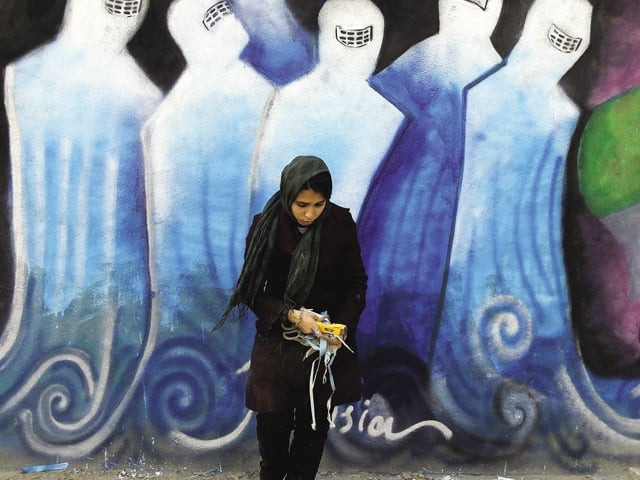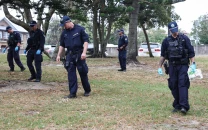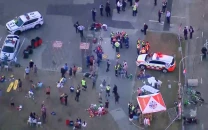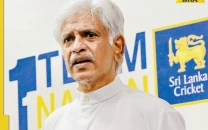Graffiti art brightens war-torn Afghanistan
An Afghan art collective called Roshd is bringing street art and graffiti to the conservative capital of Afghanistan.

Graffiti art brightens war-torn Afghanistan
The artistes eventually want to take their creativity and commentary to the dusty city centre, where blast walls, scrawled advertisements, political propaganda and armed guards tend to be the norm.
Ommolbanin Shamsia Hassani, 22, who is due to start teaching fine arts at the Kabul University, paints a burqa-clad group in oceanic colours on the streets of Kabul to reflect the pure essence and subservience of women in Afghanistan.
“Water is always associated to cleanliness and I want to show that women are clean too,” said Hassani. “It was the first time I was painting a big wall, I have always painted on small pieces of canvas, and now I have become very tired because the wall was much bigger,” comments Hassani after having completed her first wall graffiti.
Hassani and the other artistes have been working with British graffiti artiste, Chu who came especially from London to conduct a one- week workshop in Kabul. Chu has been painting on walls for almost 30 years and has completed several major projects including painting an entire train; his presence has been a great source of inspiration to the women of Kabul.
“In a very short span of time they (students of the workshop) have absorbed all the skills necessary to paint something huge. It’s just magical what’s been happening before my eyes and the end result is that they just want to paint more,” says Chu. The artiste claims that some women signed up for the workshop without knowing anything about the essence of the art form or what graffiti was all about.
“There is one reaction I will never forget and that was the concern for big paintings that come with the possibility of being disturbing. I told them, ‘that’s the point’,” says Chu.
While a group of women in burqas rise from the oppressive seas to symbolise cleanliness, a male artiste Farid Khurrami uses art to bring attention to Afghanistan’s war-torn appalling public transport.
Khurrami is a 29 year old sculpture artiste in Afghanistan who took the initiative to paint a bus with no wheels moving past a man firing a gun in a bid to illustrate the deplorable condition of the Kabul public transport system.
“People are suffering very much in Kabul,” he said. “People will be very surprised by this new form of art; it’s a much better way to communicate with a broader audience.”
Chu leaves Kabul hopeful that his students will continue to paint more graffiti. “The more graffiti the better, Afghanistan will rock,” he said.
Pakistan’s creative force
Afghanistan is not the only muslim country that is going through artistic change, Pakistan’s late artiste Asim Butt was a pioneering graffiti artiste. His work made waves in art, with his participation in the Stuckist art movement and is best known for his graffiti work that used the eject symbol indicating the end of General Musharraf’s rule. As the 15th of January approaches, Pakistan will commemorate Butt’s first death anniversary in 2011.
Published in The Express Tribune, December 22nd, 2010.



















COMMENTS
Comments are moderated and generally will be posted if they are on-topic and not abusive.
For more information, please see our Comments FAQ